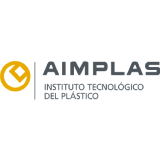Danger or safety pictograms
Chemical substances have a great presence in the consumer’s daily life. Cleaning products, insecticides, detergents or paints are part of the many products commonly purchased and although most of them are not dangerous, there are others that are, so it is important to know how to interpret the information on their labels: for this purpose, the hazard or safety pictograms are used.
What is a pictogram?
Hazard pictograms are used to graphically represent a specific hazard.
Consequently, it is the classification of the substance or mixture that dictates the hazard pictograms to appear on a label, based on sections 2 (physical hazards), 3 (health hazards) and 4 (environmental hazards) of Annex I of CLP (Article 19 of CLP).
Annex V of CLP specifies the applicability of hazard pictograms according to hazard category and class.
What kind of products include pictograms?
The hazard pictograms appear on cleaning products, insecticides, solvents, light bulbs, cosmetics, disinfectants, laundry detergents, paints, batteries, mechanical products, adhesives and fuels for machinery, among others.
Safety pictograms: what do they include?
According to Royal Decree 255/2003 on classification, packaging and labeling of dangerous products, these products must compulsorily and legibly indicate:
The trade name or commercial name of the preparation;
- The name, full address and telephone number of the person established in the European Union responsible for marketing the product.
- The chemical name of the substance or substances it contains.
- The quantity of substance or mixture contained in the container.
- If necessary, the hazard pictograms.
- If necessary, the signal words, such as caution (to indicate less serious risks) or danger (to indicate more serious risks).
- If necessary, hazard statements (H-phrases). Example: May harm the unborn child; Deadly if swallowed; May cause drowsiness or dizziness.
- If necessary, precautionary statements (P phrases). Example: Keep out of reach of children; Use with protective goggles; Avoid contact with skin or clothing; Avoid release to the environment.
- If necessary, a supplementary information section.
On the other hand, in 2008, the European Union approved the CLP Regulation, which requires the inclusion of hazard pictograms on the labels of harmful products to facilitate their identification.
These pictograms consist of an image with a warning symbol in the form of a red diamond on a white background, with a black illustration inside. Each pictogram must cover at least one fifteenth of the label surface.
These pictograms provide information on the damage that a given substance or mixture may cause to the consumer’s health or to the environment.













